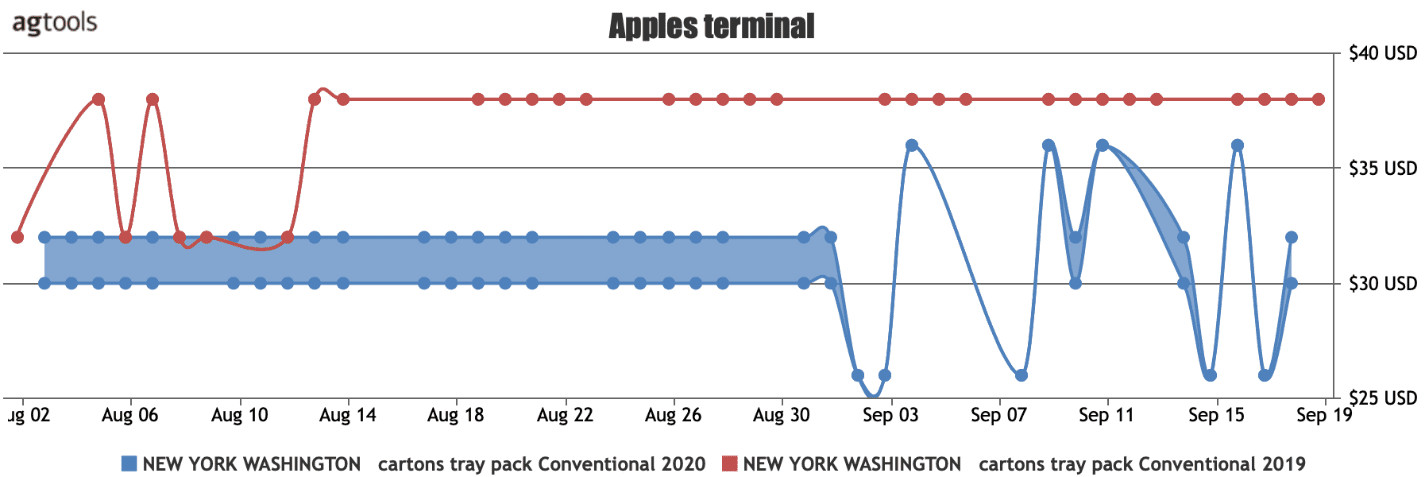Apple prices are lower at the start of the season, despite lighter volume than last year at this point.
F.O.B. PRICE IN YAKIMA VALLEY & WENATCHEE DISTRICT FOR APPLES (VARIETY GALA) CONVENTIONAL SIZE 100s FROM AUGUST 1ST THROUGH SEPTEMBER 20TH
We can see that this year despite having a lower volume than the previous year in this period of time the price has been lower than in 2019, said Paola Ochoa, Program Manager for Agtools Inc. BB #:355102
Blue Book has teamed with Agtools Inc., the data analytic service for the produce industry, to look at a handful of crops and how they’re adjusting in the market during the pandemic.
To the contrary compared with prices in 2018, this year’s pricing is very similar. One interesting pattern can be observed that despite volume decreases in Washington, the prices do not increase in relation to the decrease in volume as one would expect, she said.
NEW YORK TERMINAL PRICE FOR APPLES (VARIETY GALA) CONVENTIONAL SIZE 100s FROM AUGUST 1ST THROUGH SEPTEMBER 20TH
The New York terminal market prices as well as the F.O.B. prices, present lower prices this year when compared to 2019, Ochoa said.
We can also see that despite the fact that the prices in August have been very stable this 2020, beginning on the September 3rd a period of extreme price volatility begins even going up by $10 from one day to the next. This is in contrast to 2019 in which the price volatility took place in August while September remained totally stable.
SOUTHWEST RETAIL PRICE FOR APPLES (VARIETY GALA) CONVENTIONAL FROM AUGUST 1ST THROUGH SEPTEMBER 20TH
The retail price in the Southwest has been very stable compared to previous years, Ochoa said, so we can conclude that the decrease in volume this year has not directly impacted consumer prices.
When analyzing the volumes and prices of this product, we can conclude that the demand for apples in this period of time has been lower this year than last year, she said.
Also of interest is that despite having a volume decrease of more than 5 percent, F.O.B. and terminal market prices have not increased and to the contrary they have decreased.
Volume
Washington is the single largest producer with 82.3 percent of the U.S. production of apples. The regions of New York, Michigan, Chile and Appalachia are the next group of producers for the U.S. in terms of volume. These five supplying regions are responsible for almost the entire U.S. volume.
VOLUME TOTAL, APPLES CONVENTIONAL FROM AUGUST 1ST THROUGH SEPTEMBER 20TH
A comparison of 2020 volume with 2019 and 2018, for the period between August and September 20, 2020, shows decreases of 6 percent and increases of 6.5 percent, respectively, Ochoa said.
Demand for this commodity has been reduced this year despite the fact that in recent years it has shown sustained growth, she said.







